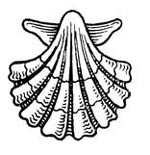
Who Made This?
GUEST COLUMN
Last weekend I took my three-year-old son for a walk in the woods near our house. We were ambling down a path along a small creek, enjoying the sound of the running water, and thinking maybe we’d catch a glimpse of some wildlife. About ten minutes into our hike, we spotted at the water’s edge what appeared to be a pile of stacked stones. Moving closer to examine the pile, we saw that it consisted of twelve stones, all whitish in color, smooth in texture, and flat enough to allow each to balance upon the one below it. They varied slightly in size and were arranged more or less with the largest at the base and the smallest at the peak. My son, intrigued by this unexpected find, looked from the stones to me and asked, “Papa, who made this?”
I replied honestly, “I don’t know.”
“I like it,” he said, unfazed by my inability to answer his question. “Can we make one too?”
“I don’t see why not. Just don’t get too wet or we might get into trouble with Mom!”
So we spent the next twenty minutes or so finding rocks to his liking and then carefully assembling them into a tower alongside the original. Once the task was complete, we stood back to look at the two towers side by side.
My son, looking pleased with the result, asked me, “Do you think the person who made the first one will see ours?”
You May Also Enjoy
A Dull Plodder... Plowing the Sea... Clarifying the "Clarification"... On the Origin of Virtues... Reasonable Grounds... Freighted with Meaning... A Farce of Monumental Proportions... The Endgame... Not Above Informed Criticism... Social Justice: A Trojan Horse
Is this a problem with "homosexual priests"? Not really, concludes Fr. James Martin.
If someone were to bring the outspoken honesty of Jesus to an American parish, he would probably be branded a fanatic with sociopathic tendencies.

